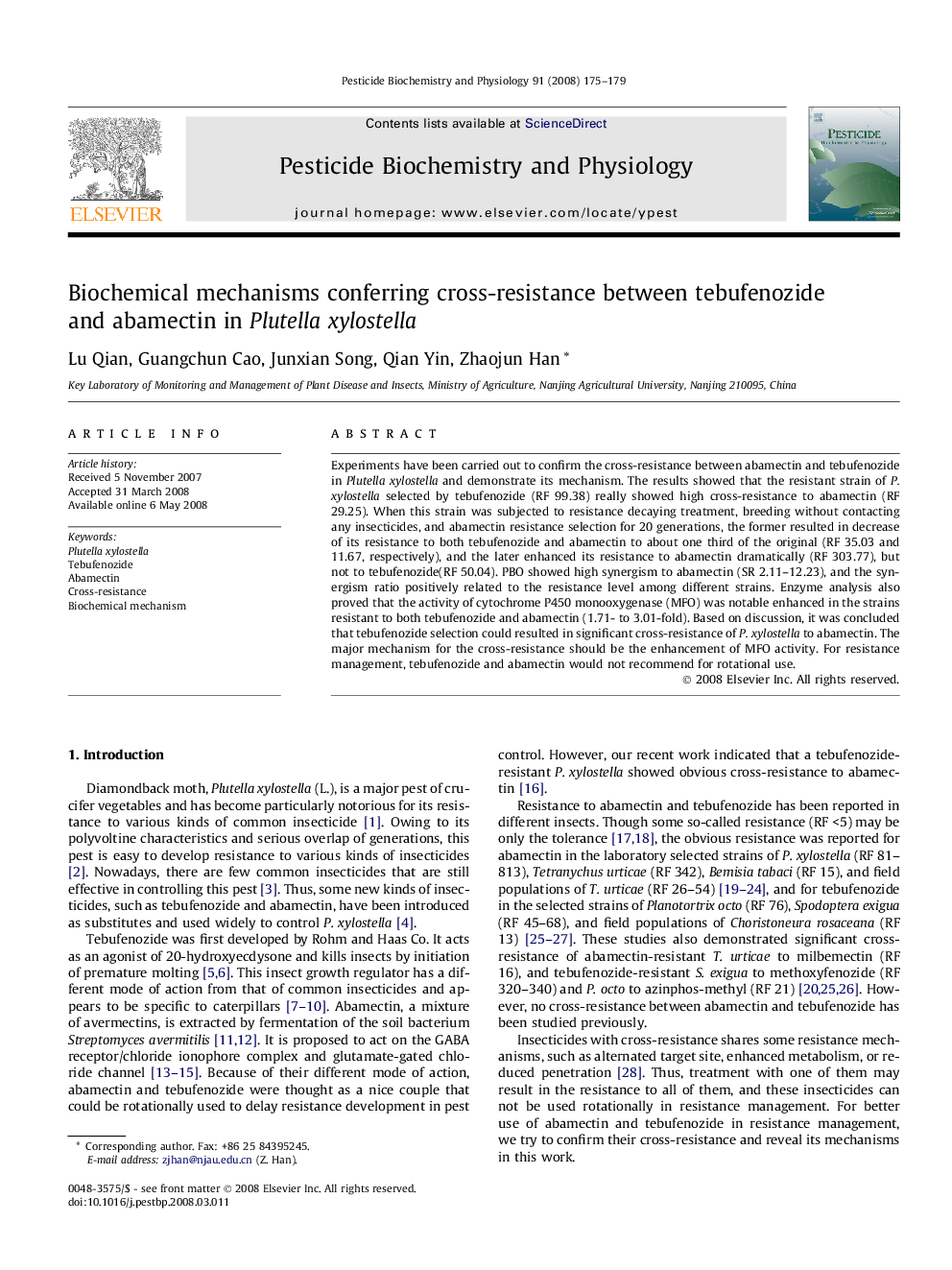| Article ID | Journal | Published Year | Pages | File Type |
|---|---|---|---|---|
| 2010099 | Pesticide Biochemistry and Physiology | 2008 | 5 Pages |
Experiments have been carried out to confirm the cross-resistance between abamectin and tebufenozide in Plutella xylostella and demonstrate its mechanism. The results showed that the resistant strain of P. xylostella selected by tebufenozide (RF 99.38) really showed high cross-resistance to abamectin (RF 29.25). When this strain was subjected to resistance decaying treatment, breeding without contacting any insecticides, and abamectin resistance selection for 20 generations, the former resulted in decrease of its resistance to both tebufenozide and abamectin to about one third of the original (RF 35.03 and 11.67, respectively), and the later enhanced its resistance to abamectin dramatically (RF 303.77), but not to tebufenozide(RF 50.04). PBO showed high synergism to abamectin (SR 2.11–12.23), and the synergism ratio positively related to the resistance level among different strains. Enzyme analysis also proved that the activity of cytochrome P450 monooxygenase (MFO) was notable enhanced in the strains resistant to both tebufenozide and abamectin (1.71- to 3.01-fold). Based on discussion, it was concluded that tebufenozide selection could resulted in significant cross-resistance of P. xylostella to abamectin. The major mechanism for the cross-resistance should be the enhancement of MFO activity. For resistance management, tebufenozide and abamectin would not recommend for rotational use.
